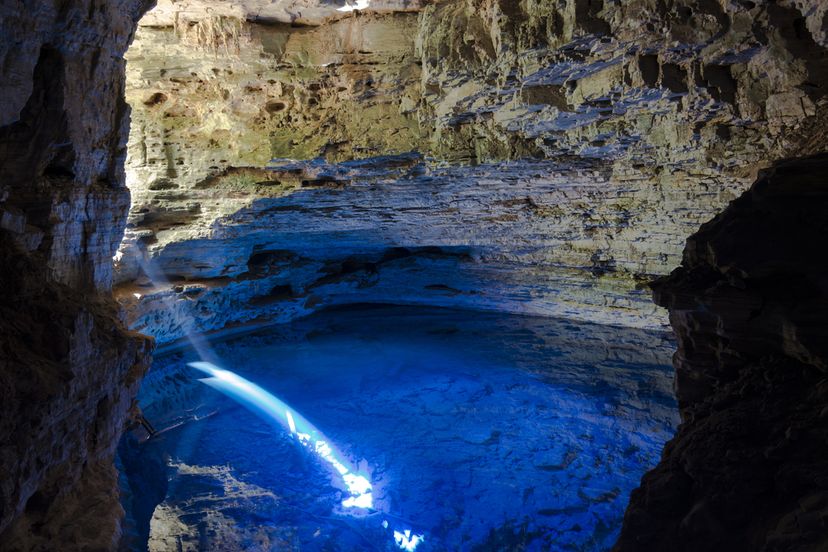
The extremely large country of Brazil offers visitors unique and exciting opportunities to explore natural beauty unlike anywhere else in the world. Brazil is full of towering waterfalls, the infamous Amazon River, the world’s largest and diverse wetland and other natural wonders. From the incredible white sand dunes connected by brilliant blue lagoons to the enchanted sunken pools that are full of startlingly clear waters; there is no shortage of breathtaking beautiful things to see. From giant anteaters to pumas and jaguars, to colorful birds and brilliant flora we encourage you to escape from the hustle and bustle of the busy cities of Brazil and discover the best eight natural wonders of this gorgeous country.
Advertisement
1. Cachoeira da Fumaça (Smoke Falls)
This towering 340m tall cascading waterfall is truly one of Brazil’s best natural wonders. The rainy season is the best time to see the water as it crashes over the ledge into the pool. The dry season can offer only a trickle of water at times but the view is still awe-inspiring. There are two different ways to approach this breathtaking natural wonder:
The first is from the top and a long 6 kilometer hike is required. The hike involves steep natural stairs and offers views of colorful fauna and flora along the way. You will be awarded with one of the most spectacular views in this country as you stand atop the plateau and look out over lush hills and mountain tops. Looking at the actual waterfall from this vantage point takes guts as you must get on your stomach and peer over the ledge. The second way to reach the falls is from the bottom, after a three day trek. Here you can swim in the pool below and look up at one of Brazil’s most amazing waterfalls.
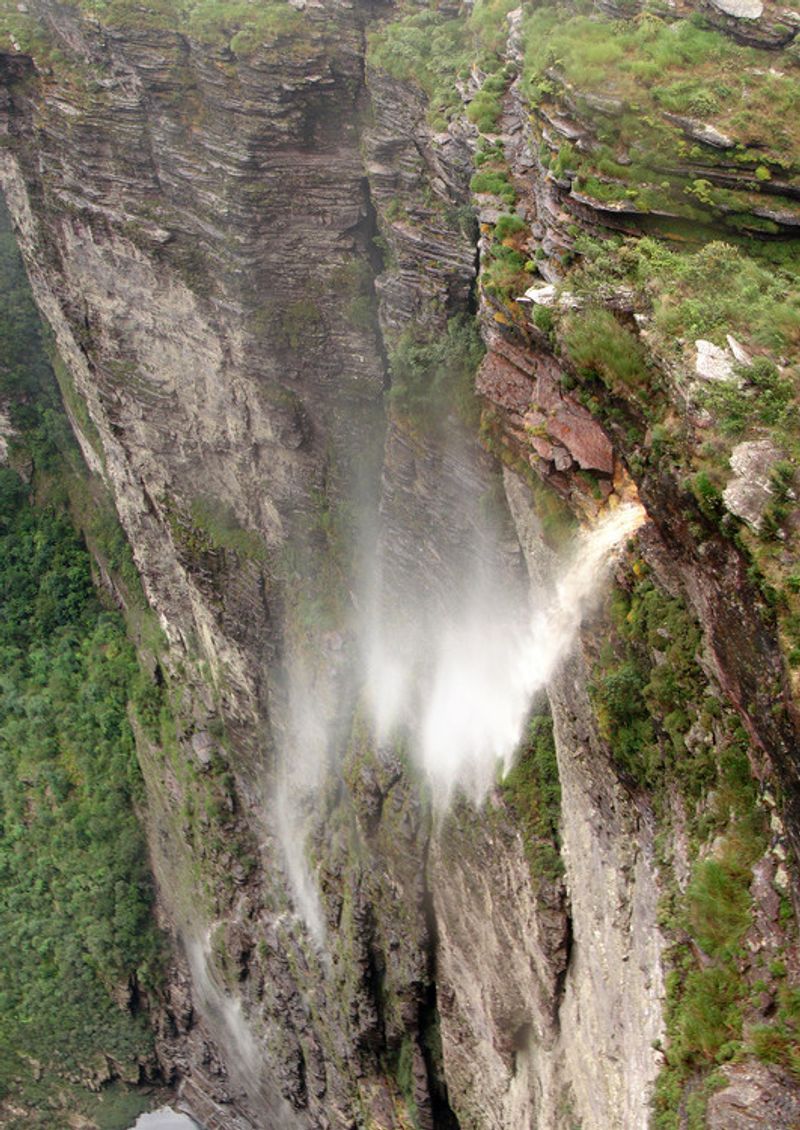
Advertisement
2. Iguaçu Falls
One of the largest and most spectacular waterfalls borders the countries of Argentina and Brazil. Iguaçu Falls is comprised of 275 stunning individual drops with unique and endangered species of flora and fauna. This enormous waterfall spans an impressive 2,700m. The Brazil side offers the best panoramic views and access to devil’s throat; a long chasm towering 82-metres high with a distinguishing U-shape.
Walk out on the long bridge over several waterfalls that allow visitors not only to stand above the falls but to have several more in front of them. All part of the experience; prepare to get wet as the falls thunder around you. Double-decker buses will take you to a variety of trails where wildlife viewing is plentiful. Keep your eyes open for howler monkeys, toucans, jaguars, pampas deer and brilliant colored birds. If you have the chance to slide over to the Argentinean side we suggest taking the boat ride under the falls which is truly a once in a lifetime opportunity.

Advertisement
3. Pantanal Wetlands
The world’s largest wetland and diverse eco-system is a natural wonder that must be explored on any trip to Brazil. Stretching over 200,000 sq km’s the Pantanal has few people and no towns and visitors get around by joining a tour where they will experience this area in a 4WD vehicle, boat or by horseback. Home to over 700 species of birds, 100 species of mammals, 260 species of fish and 80 reptile species; this area is the go-to for visitors looking for wildlife.
Travel to this area between July and October when the water starts to evaporate, lakes have turned into ponds with copious amounts of fish and animals are in abundance. Be prepared to leave your cell phones at home as most of the lodges offer little connectivity to the outside world. Pantanal Wetlands have remained under-developed due to the annual floods and only a handful of large scattered ranches that have grazing cattle exist in this area often called “South America’s Wild West”. Giant anteaters, pumas, giant river otters and so many other species co-exist with light human use in this unique eco-system.
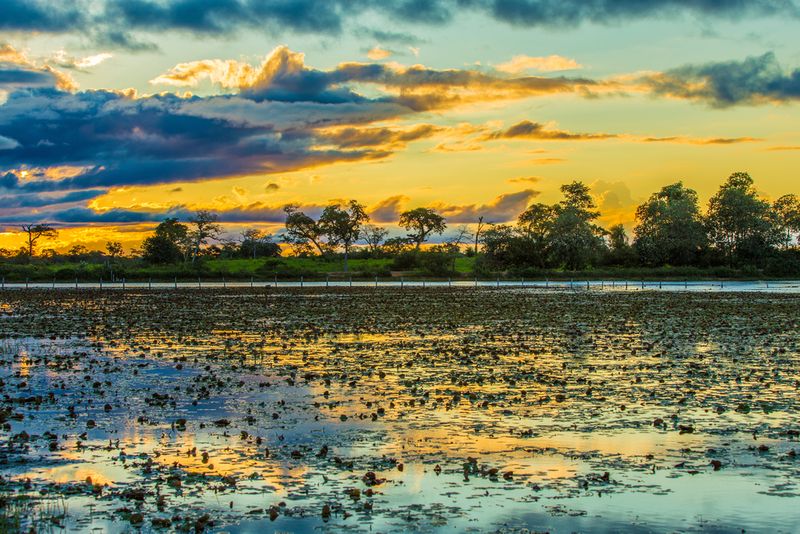
Advertisement
4. Lençois Maranhenses
Blindingly white in color, huge sand dunes tower over rain-made lagoons in this fascinating National Park that brings visitors from all over the world. Not the easiest natural wonder to get to on our list but perhaps the most unique as this otherworldly landscape goes on as far as the eye can see. During July is the best time to visit as the lagoons are full of crystal sparkling blue or green waters depending on which one you visit. Relax, swim and walk barefoot amongst one of the most unbelievable landscapes on the planet.
Get lost in this 600 square-mile national park amongst the Sheppard’s leading their goats over the dunes, the fishermen headed out to sea guided by the sun and stars and the schools of fish as they race through the lagoons. Avoid the touristy activity of joy riding up and down the dunes in an all-terrain vehicle as it’s prohibited because of the danger it poses to the animals that call this place home. Instead go back in time and enjoy the sand under your feet as you walk among the ever changing dunes.
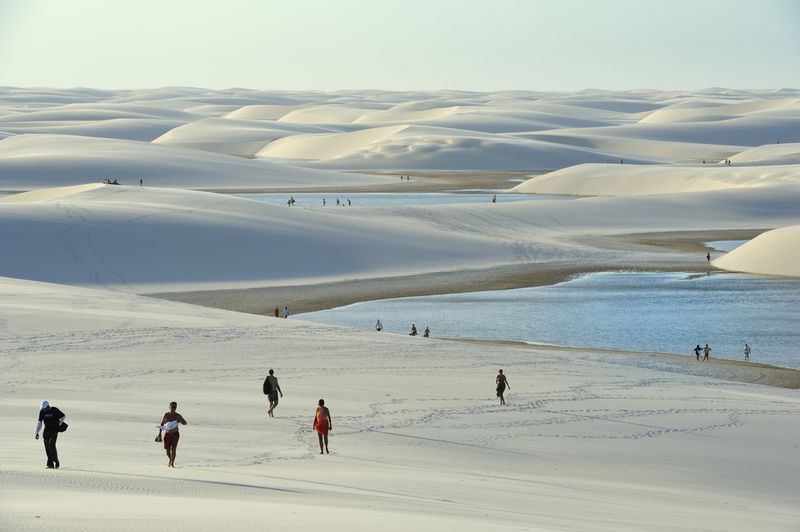
Advertisement
5. Poco Encantado and Poco Azul
Poco Encantado aka the Enchanted Well is a sunken pool nestled in a cave with crystal clear water and visibility unlike any other. From April to September the sun is at the perfect angle to shine through the natural window and hit the water; create a stunning blue effect. The unbelievably clear water allows visitors to view the ancient rocks and tree trunks that line the bottom. Visiting this fragile eco-system is a favorite experience amongst visitors to the Chapada Diamantina National Park region.
Poco Azul is very similar to the Enchanted Well with one defining difference. Poco Azul offers visitors the chance to swim in its startling blue waters amongst ancient trees that have sunken into the pool. The contrast of golden rocks with the crystal blue waters will delight you. Swimmers are required to take a shower and wear a life preserver when they go in. Home to some of the country’s most impressive caves; The Chapada Diamantina National Park is set amongst table mountains, gorges, ravines, canyons and semi-deserts. This regions offers two of Brazil’s most spectacular caves and these natural wonders are a must visit.
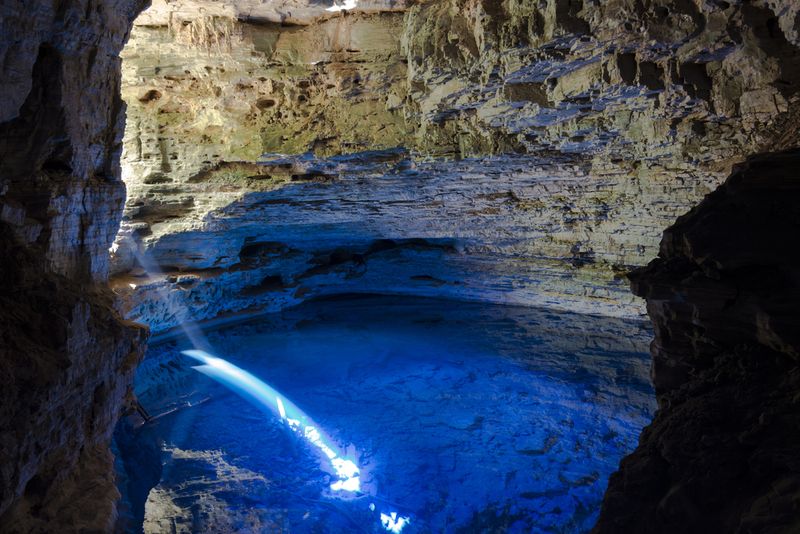
Advertisement
6. Fernando de Noronha
If you don’t live in South America you likely haven’t heard of Fernando de Noronha, and even if you do live here; the chance to visit this island is likely just a pipe dream. If you happen to be one of the few lucky visitors here get ready to explore a breathtaking eco-wonderland. Fernando de Noronha is actually an archipelago of 21 islands and islets in the Atlantic Ocean located 354 km off the Brazilian coast and has a maximum capacity of 460 visitors at one time.
The top two beaches in Brazil reside here; Praia do Leão and Baía do Sancho which offer excellent swimming and snorkeling. Divers will delight in the crystal clear waters which house over 200 species of fish, five species of sharks, sea turtles and the incredible spinner dolphins. Snorkeling at Praia da Atalaia is a special experience if you have the chance. This unique tidal pool only allows 100 visitors a day to its shallow pool filled with lobsters, octopus, fish and a baby shark if you are lucky. The breathtaking scenery, beautiful landscapes and the exclusivity of this natural wonders catapults Fernando de Noronha to the top of our must see list.

Advertisement
7. Encontro das Aguas
The ‘Meeting of Waters’ is one of the main tourist attractions in Manaus, Brazil. For a total of six kilometers the Rio Negro and the Solimoes River run side by side without mixing. The Rio Negro boasts dark black colored water that runs at 2km an hour with a temperature of 28 degrees Celsius. Whereas the Solimoes River is a lighter sandy color and flows between 4-6km an hour and has a temperature of 22 degrees Celsius. The difference in speed, temperature and water density is how this unbelievable phenomenon is explained.
You will have to travel almost four miles downstream to see where these two rivers actually meet to form the Amazon River. A full day cruise down the Rio Negro will take you to where the rivers meet and provide you with the most spectacular views as well as a fun-filled day on the river. Check out the many tour operators that offer this experience and prepare to be amazed.
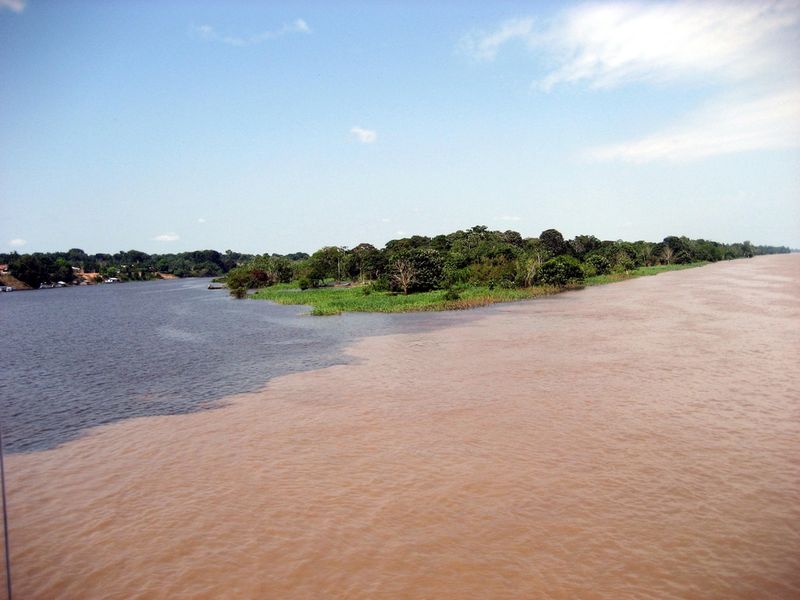
Advertisement
8. The Amazon
The very life spring of the planet; larger than the next eight largest rivers combined, responsible for the air we breathe, the water we drink, the Amazon River is truly a natural wonder. With so many options of starting points, length of trip, and method of travel; there is an experience for everyone. Towering trees sunk into the water, monkeys swinging from branch to branch and an abundance of activities; The Amazon begs to be explored.
Whether you visit it in the rainy season and silently glide through the flooded forests in a canoe or you visit in the dry season with sunny skies and the opportunity to take long hikes; there really is no bad time to come. The Amazon offers experiences such as tree climbing, piranha fishing, caiman spotting and experiences with local rubber-tapper communities. Jungle lodges offer visitors a chance to sleep in the jungle and explore the area on survival trips where river boat excursions offer the chance to chug along the waters and experience the river from a different point of view. However you choose to experience The Amazon it will be an unforgettable experience.
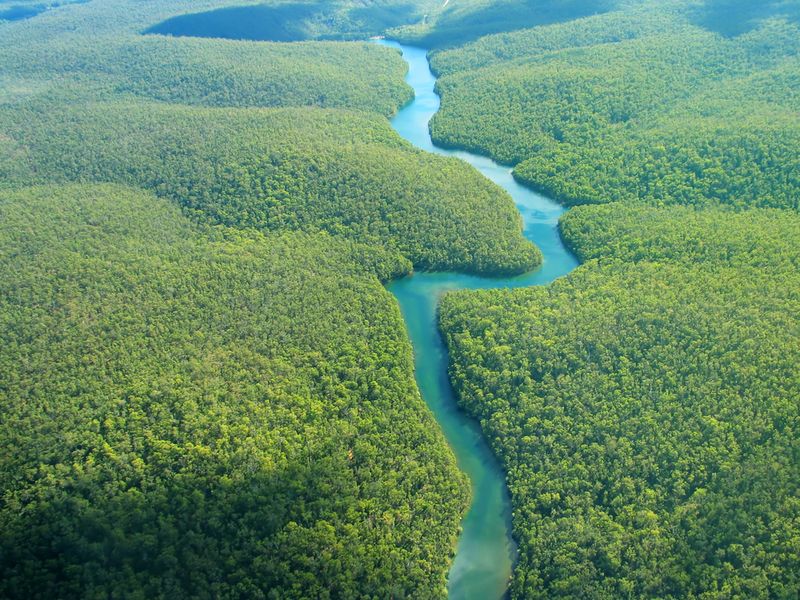
Advertisement